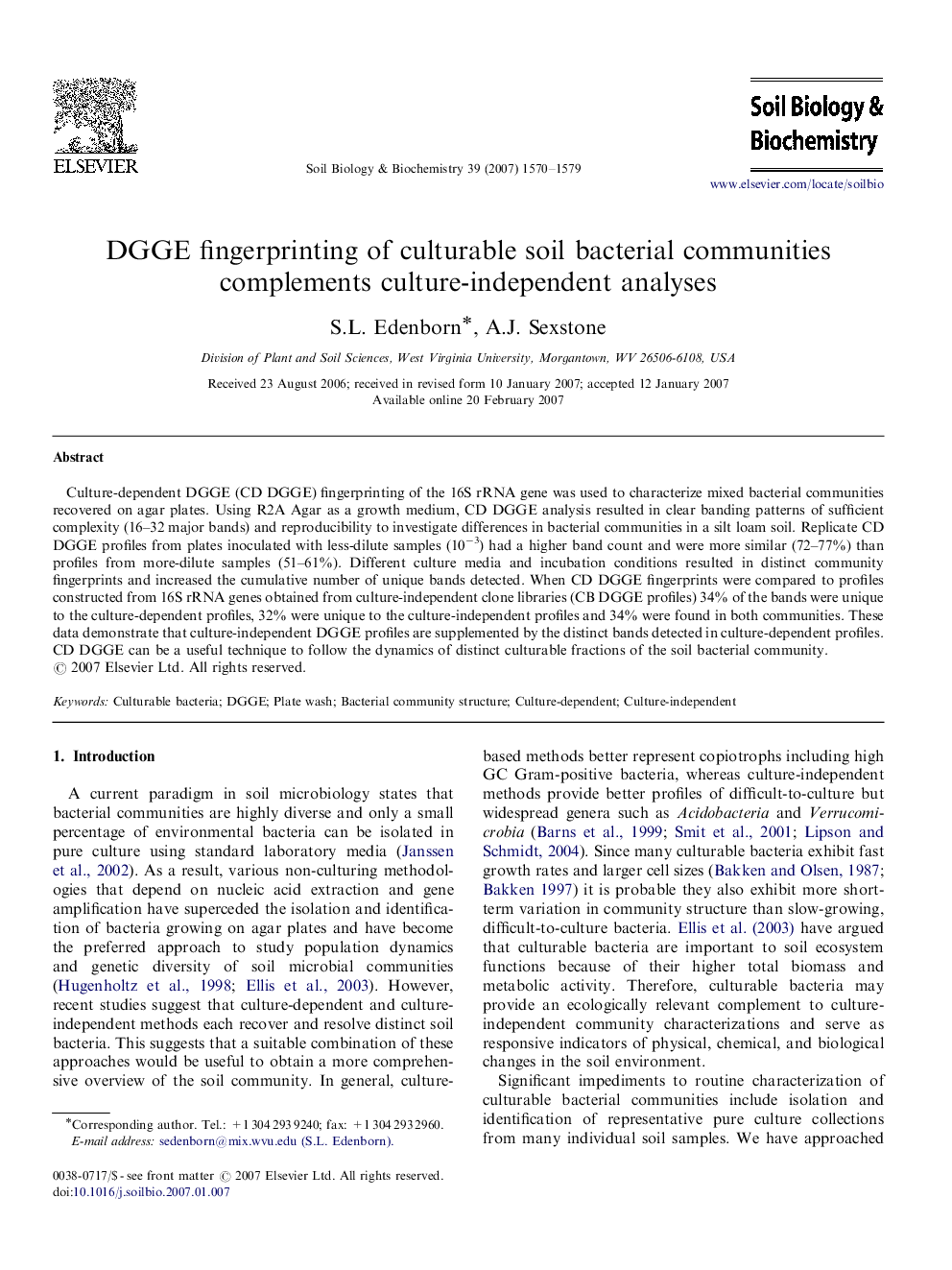| Article ID | Journal | Published Year | Pages | File Type |
|---|---|---|---|---|
| 2026221 | Soil Biology and Biochemistry | 2007 | 10 Pages |
Culture-dependent DGGE (CD DGGE) fingerprinting of the 16S rRNA gene was used to characterize mixed bacterial communities recovered on agar plates. Using R2A Agar as a growth medium, CD DGGE analysis resulted in clear banding patterns of sufficient complexity (16–32 major bands) and reproducibility to investigate differences in bacterial communities in a silt loam soil. Replicate CD DGGE profiles from plates inoculated with less-dilute samples (10−3) had a higher band count and were more similar (72–77%) than profiles from more-dilute samples (51–61%). Different culture media and incubation conditions resulted in distinct community fingerprints and increased the cumulative number of unique bands detected. When CD DGGE fingerprints were compared to profiles constructed from 16S rRNA genes obtained from culture-independent clone libraries (CB DGGE profiles) 34% of the bands were unique to the culture-dependent profiles, 32% were unique to the culture-independent profiles and 34% were found in both communities. These data demonstrate that culture-independent DGGE profiles are supplemented by the distinct bands detected in culture-dependent profiles. CD DGGE can be a useful technique to follow the dynamics of distinct culturable fractions of the soil bacterial community.
